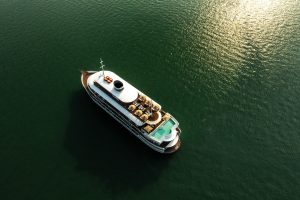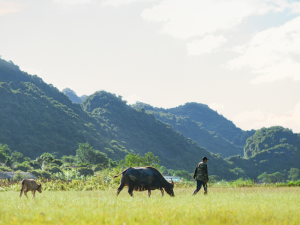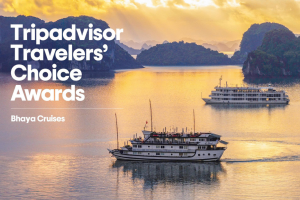Another initiative we are proud to support is the Cat Ba Langur Conservation Project, which leads the vital effort to protect this critically endangered primate.
The Cat Ba Langur Conservation Project (CBLCP) was launched in November 2000 with the main objective of halting the impending extinction of the Cat Ba Langur (Trachypithecus poliocephalus). The Langur is a leaf-eating monkey that is endemic to Cat Ba Island situated in Ha Long Bay, Northern Vietnam. Under the stewardship of Mr. Neahga Leonard (Project Manager), the team focuses on Species and Habitat Protection, Population Monitoring, Law Enforcement, Research & Environmental Education. Mr. Leonard, project leader, periodically delivers training to our management teams to help with insight and education about how we as individuals and as an organization may be able to contribute to the conservation efforts. “Of critical importance to all conservation efforts are education and involvement of local stakeholders. The CBLCP works to educate children on environmental topics in seven of the schools on Cat Ba Island, conducts periodic adult education programs in the villages surrounding and embedded in Cat Ba National Park, and assists with training for select tour companies in the region. Tour companies represent an incredibly important stakeholder locally as it is they who provide information and services to the roughly four million tourists who visit Ha Long Bay and Lan Ha Bay annually. Tour companies bear the responsibility for ensuring that their guests act in a responsible manner and that their clients leave with a memorable experience, including a greater understanding of the regional environmental situation and the role of tourists in it. Bhaya understands this responsibility as is evidenced by regularly scheduled trash pick-up in the bay, training courses for their boat managers, and involvement in the environmental planning discussions for the region.” Neahga Leonard – Project Manager
We believe we have a collective duty not to let this beautiful and very vulnerable species become extinct. As of early 2017, less than 60 individuals remain, up from the 2003 low of 40 individuals, but a substantial drop from the 64 – 70 individuals counted in 2015.
You could help save the Langur – please follow the link below for donation advice:







Pingback: fastinma
Pingback: confeitofilm